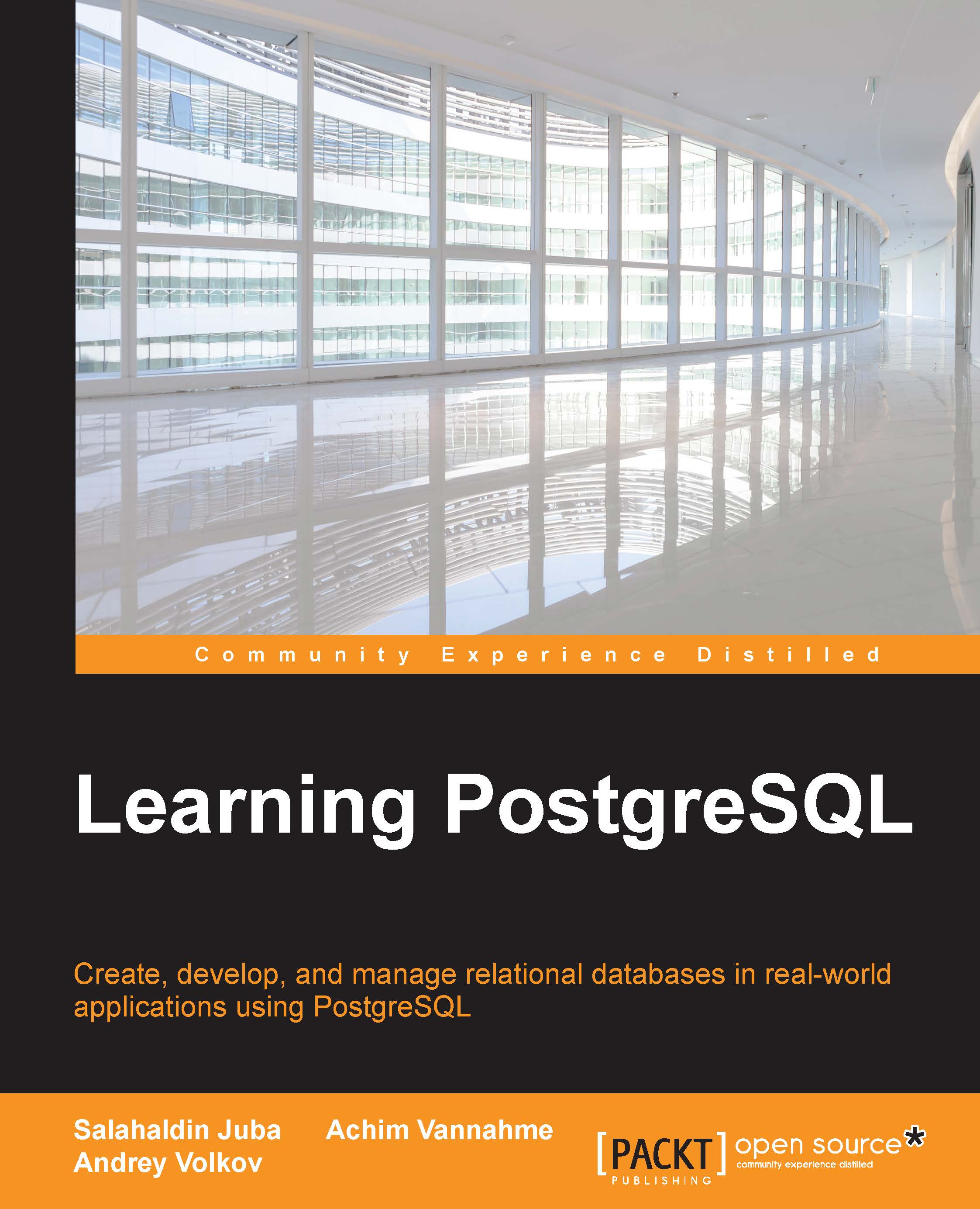-
Book Overview & Buying

-
Table Of Contents

Learning PostgreSQL
By :

Learning PostgreSQL
By:
Overview of this book
PostgreSQL is one of the most powerful and easy to use database management systems. It supports the most advanced features included in SQL standards. The book starts with the introduction of relational databases with PostegreSQL. It then moves on to covering data definition language (DDL) with emphasis on PostgreSQL and common DDL commands supported by ANSI SQL. You will then learn the data manipulation language (DML), and advanced topics like locking and multi version concurrency control (MVCC). This will give you a very robust background to tune and troubleshoot your application. The book then covers the implementation of data models in the database such as creating tables, setting up integrity constraints, building indexes, defining views and other schema objects. Next, it will give you an overview about the NoSQL capabilities of PostgreSQL along with Hstore, XML, Json and arrays. Finally by the end of the book, you'll learn to use the JDBC driver and manipulate data objects in the Hibernate framework.
Table of Contents (16 chapters)
Preface
 Free Chapter
Free Chapter
1. Relational Databases
2. PostgreSQL in Action
3. PostgreSQL Basic Building Blocks
4. PostgreSQL Advanced Building Blocks
5. SQL Language
6. Advanced Query Writing
7. Server-Side Programming with PL/pgSQL
8. PostgreSQL Security
9. The PostgreSQL System Catalog and System Administration Functions
10. Optimizing Database Performance
11. Beyond Conventional Data types
12. Testing
13. PostgreSQL JDBC
14. PostgreSQL and Hibernate
Index
